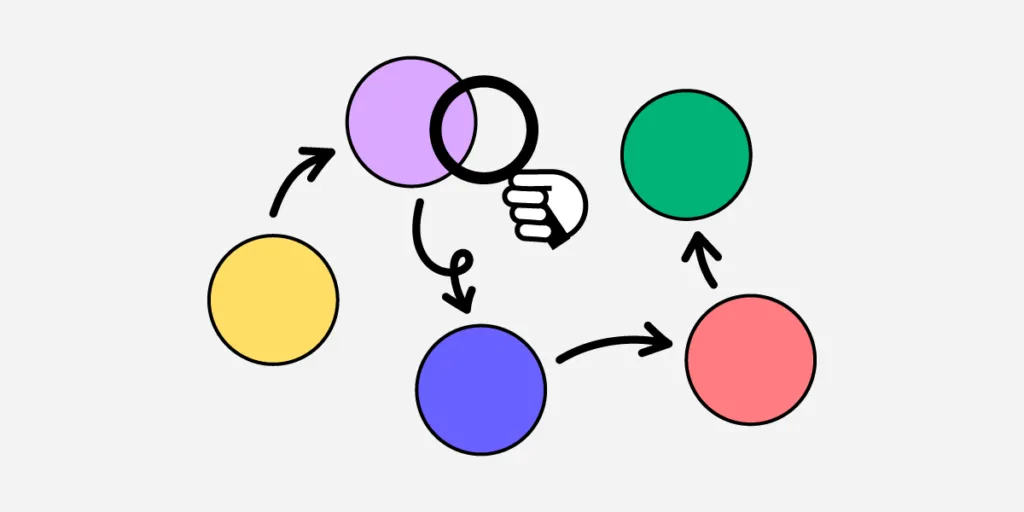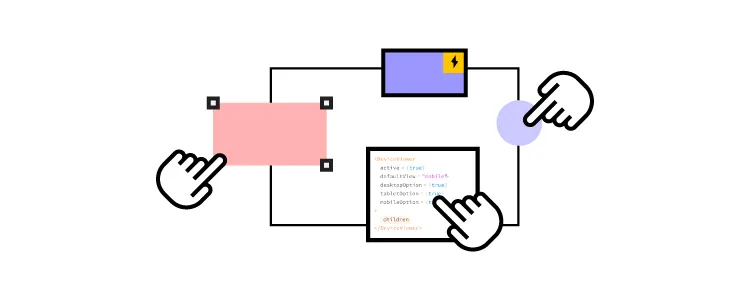How to Do a Service Safari in 5 Easy Steps

A service safari allows design teams better to understand competitors, users, and their own product. This service experience offers valuable insights for very little investment, making it an essential tool during the early stages of the design thinking process.
This article looks at the pros and cons of a service safari, how to plan and run one, and what you can expect from the results.
Design, prototype, test, and iterate with the world’s most advanced code-based design tool. Sign up for a free trial to discover how UXPin can revolutionize your UX projects.
What is a Service Safari?

A service safari is a real-world research method where designers experience a product as a user–like mystery shopping. You can conduct a service safari on your product, competitors’, or both. The process works for physical products, services, and digital products.
During a service safari, team members complete various tasks to gain insights into the product’s customer experience.
A service safari is a valuable UX design research method because it’s inexpensive (for most digital products), and teams can complete the process without users.
Who Does a Service Safari?
Usually, various team members from a design project participate in a service safari. Participating in a service safari gives team members valuable insights into the competition, but the process also provides an opportunity to empathize with users from a product-usage perspective.
When to do a Service Safari?
UX designers complete service safaris during the discovery phase of a design project when researching competitors or evaluating an existing product for a redesign. They use the results to identify opportunities and pain points that help guide the design process.
The Purpose of a Service Safari
Here are some common reasons design teams conduct service safaris:
- Understand the competition and their services
- Determine the quality of service (competitors and internally)
- Identify new business opportunities
- Identify user pain points and areas for improvement
- Gain a user’s perspective to empathize better
Pros and Cons of a Service Safari
- Pro: Great for improving empathy for customers
- Pro: Gain a first-hand understanding of the competition
- Pro: Helps validate or understand other research
- Con: Risk of bias from team members too familiar with the product
- Con: Getting into the customer’s mindset is difficult when you can anticipate what will happen next
- Con: Without clear objectives, results can be ambiguous
5 Steps for Conducting a Service Safari

The level of planning for a service safari will depend on the product or service you’re evaluating. For example, a travel booking app will require taking a flight, while a productivity app you can experience from the office.
Step 1. Meet With Team Members & Stakeholders
Meeting with stakeholders before a service safari is essential to agree on the approach, budget, business goals, timeline, and deliverables.
Next, you want to meet with the team taking part in the safari, create a plan, define the methods, outcomes, and assign tasks. Your team will also need to gather the necessary tools and materials like stationery, devices, tools, etc.
Step 2. Set Clear Objectives
Setting clear and actionable objectives is crucial in planning a service safari. These objectives will ensure team members understand each task and its outputs/deliverables.
Design Principal at ustwo in the UK, Hollie Lubbock, recommends pairing a research question with a goal to create a clear objective mission statement–objective = research question + goal.
For example:
- Question: “How do we open a new bank account using a competitor’s app? What are the current options, hacks, and issues with achieving this goal?”
- Goal: “Understand the highs, lows, and friction points in this experience.”
Step 3. Define the Documentation Process and Deliverables
How do you want team members to document their service safari experience? Some examples include:
- Notes (written, voice, etc.)
- Screenshots/screen recordings
- Photos and videos
Hollie Lubbock recommends you outline “key areas to document.”
- The experience over time: Pre/during/post
- What or who you encounter: People/processes/objects/ environments/places/communications
Hollie also gets team members to gather their general impression of the experience, like:
- How much time does it take to complete the task?
- Is it easy to complete?
- Are there clear instructions or options?
- Did you hit any dead ends? Or experience any errors?
Answering these questions provides valuable insights about the product and enables team members to empathize better when developing a solution later in the design process.
Step 4. Conduct the Service Safari
Depending on the product, a service safari could take a few hours or several weeks. Kate Greenstock’s service safari of Jelf Insurance Brokers’ UK offices took eight weeks to complete.
The most important part of running a service safari is documenting the process according to your objectives. We recommend taking lots of notes, screenshots, recordings, etc., so you don’t miss anything.
Hollie Lubbock created this free Google Doc for documenting your service safari.
We also recommend checking out Preety Naveen’s Service Safari With Skycash–a Polish-based payment service. Preety created a three-step process for each step of her Skycash service safari:
- Actions: The actions she took in each step
- Problems: The problems resulting from each action
- Recommendations: Suggestings to improve each step
A service safari aims to experience every touchpoint from a user’s perspective. Sutherland Labs’ service safari gives an example of exploring touchpoints for a train booking service:
- Booking website/app
- Visiting the station, getting on the train, etc.
- What happens at the turnstiles?
- What’s the physical ticket office like?
- Physical artifacts (tickets, maps, etc.)
The team from Sutherland Labs also takes the opportunity to speak to people, including staff and customers, to get different perspectives. For example, if you’re designing a train booking app, how do people with disabilities experience the service? What are their pain points?
While a service safari is primarily about you experiencing the service, it’s ultimately about finding a solution for customers, so take the opportunity to speak to other users and ask questions. This inquisitive approach could provide valuable usability and accessibility insights.
Step 5. Synthesizing the Results
An affinity map works best when analyzing notes from a service safari. You’ll need a whiteboard (or digital alternative for remote collaboration) and sticky notes.
- Create headings for each step in your service safari–i.e., open the app, create an account, etc. If you’re analyzing products from several competitors, these steps might differ.
- Write your raw notes for each step onto sticky notes and paste them under the relevant heading.
- As a group, identify patterns, key issues, and opportunities.
- Create a journey map to visualize your results and guide your next decisions.
It’s important to note that you must never use a service safari as a standalone piece of research. Design teams must cross-reference the results with other data or use it to guide and validate further user research.
Using Service Safaris to Prototype in UXPin

Building prototypes is an excellent way to test recommendations and hypotheses after a service safari. UXPin’s built-in design libraries, like Google’s comprehensive Material Design UI, enable designers to build prototypes, test ideas, and iterate fast!
Instead of presenting just a customer journey map or report to stakeholders, designers can build a quick prototype in UXPin, and use it to get buy-in for their solution.
Enhanced Collaboration
Whether you’re working in the office or part of a remote team, UXPin’s Comments enhance collaboration between design teams. Multiple designers can simultaneously work on the same project to design wireframes, mockups, and prototypes.
Adding Stakeholders and Collaborators
Did you know you can share your UXPin projects with stakeholders, experts, consultants, and other collaborators who don’t have a UXPin account?
These stakeholders can view your designs and prototypes, leave comments, and approve from anywhere–perfect for today’s remote work environments. You can even include a message with your approval, so stakeholders know what they’re reviewing for approval. UXPin also integrates with Slack and Jira, allowing you to discuss projects in one place.
Streamlined Design Handoffs
Design handoffs are a stressful time for designers and engineers. Miscommunication, lack of documentation, and poor-quality prototypes cause friction between teams.
Because UXPin is a code-based design tool, designers can replicate code-like functionality and fidelity, while Spec Mode gives engineers context and documentation to begin the development process, including:
- Inspecting Properties: Inspect the properties of any element or component, including its size, grid, colors, and typography.
- Distance Measurement: Measure distances between elements or the canvas edges.
- Style Guide: Details about the project’s styles, including colors, typography, and assets.
Designers can also create documentation with labels for each element to provide engineers with context and explanations–no more external PDFs or attachments!
If you’re still using outdated image-based design tools to design, prototype, and test, it’s time to switch to UXPin–the world’s leading code-based design solution. Sign up for a free trial and start designing better user experiences for your customers today!




